The colorful, adaptable wildflower bee balm plants make a great addition to flower beds, cottage gardens, tall borders, and herb gardens. But what should you plant with it? The list below includes some of the best companion plants for bee balm, whether for benefits to either plant or simply for well-matched beauty in the garden.
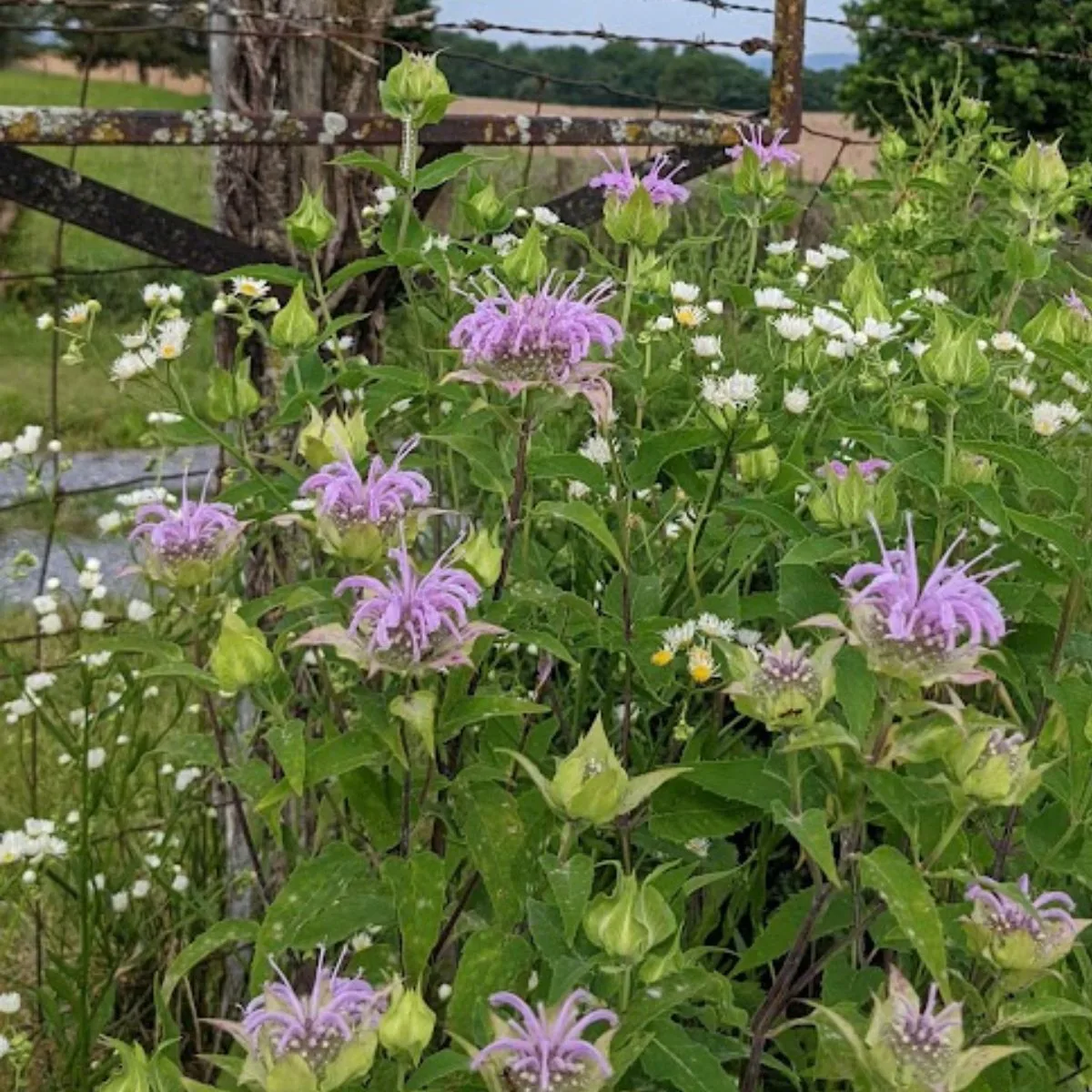
Also known by its genus, Monarda, bee balm is an herb native to North America. This member of the mint family grows eight inches to four feet tall, depending on the species or cultivar, and spreads readily.
In the late spring or early summer, its unique, showy flowers bloom in vibrant shades of pink, purple (Monarda fistulosa), or red (Monarda didyma), attracting beneficial and beautiful wildlife like butterflies, hummingbirds, and bees, though deer typically avoid the plant.
Both the flowers and the fragrant foliage are edible and even have medicinal properties. Other common names for bee balm are Oswego tea (comes from its use as an herbal tea), wild bergamot, and horsemint.
Best Companion Plants for Bee Balm
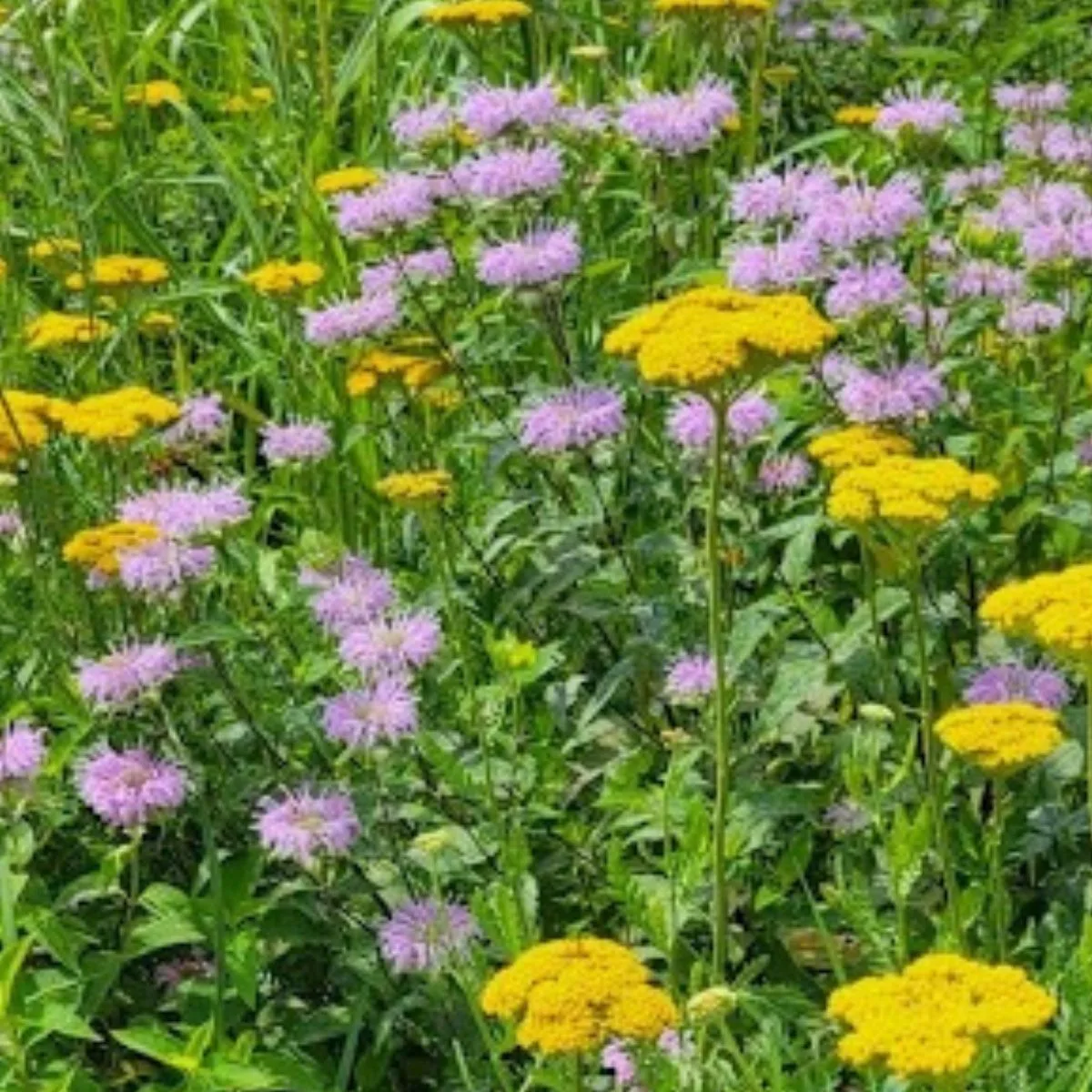
Like many herbs, bee balm is an ideal companion plant in the vegetable garden, attracting beneficial insects and repelling some pests.
However, it does like to spread, so consider keeping it in a well-contained border. Some cultivars are also less aggressive, such as the foot-tall ‘Petite Delight,’ which also has only a one-foot spread.
Bee balm’s tall, showy blooms also pair well with many other tall flowers, herbs, and grasses. Choosing plants that can hold their own against its aggressive nature will help ensure a colorful garden rather than ending up with a monocrop of bee balm, which can crowd out more delicate plants. The herbs and ornamentals listed below are good options.
1. Squash
If squash bugs plague your summer squash, zucchini, pumpkins, or winter squash, bee balm is an excellent companion to plant nearby, as it repels damaging squash bugs. Bee balm also attracts bees and other pollinators, which are essential for squash plants to set fruit.
2. Tomatoes
Some gardeners have found that growing bee balm near tomatoes results in improved health and growth of the tomato plants. It can even enhance the flavor of the tomato fruits! Plus, you get all of the benefits from the predatory and pollinating insects that bee balm attracts.
3. Black-eyed Susan (Rudbeckia hirta)
Daisylike flowers, such as black-eyed Susan, pair well visually with bee balm. The golden yellow petals and dark centers of black-eyed Susan contrast nicely with the shaggy, rosy bee balm flowers. These two native perennials also share growing requirements: moist, well-drained, moderately fertile soil and full sun.
4. Big bluestem (Andropogon gerardi)
Tall bee balm also looks great with ornamental grasses, whether in a landscaped bed or in a wildflower meadow. Big bluestem, a rhizomatous grass native to the prairies of North America, is a wonderful option. Mixing flowers with grasses helps vary the texture in a garden and provide a wider range of habitat in a meadow.
5. Joe Pye weed (Eupatorium spp.)
Another native of North America, Joe Pye weed tolerates everything from moist soil to drought. It produces large umbels of white to reddish flowers on tall stalks from midsummer through fall, beautifully complementing bee balm. Most varieties also have lovely purple stems; one cultivar even features rich, chocolatey purple foliage. Joe Pye weed also attracts many beneficial insects!
6. Salvia (Salvia spp.)
Being the largest genus of the mint family, Salvia varies greatly in every aspect. Overall, it tends to be known for soft, blue-green foliage and tubular flowers that attract butterflies, bees, and hummingbirds. Tuck an annual or tender perennial salvia into empty spaces around bee balm, or choose a tall perennial variety to grow alongside it year after year. If your bee balm is in an herb garden, garden sage (S. officionalis) is an obvious choice.
7. Tall tickseed (Coreopsis tripteris)
Like black-eyed Susan, tall tickseed is a sunny, daisylike flower that provides a nice contrast with the texture and color of bee balm. It tolerates a range of growing conditions, and being an aggressive spreader itself, tickseed can easily hold its ground next to bee balm.
8. Yarrow (Achillea spp.)
The feathery foliage of yarrow adds soft texture to any flower garden and looks beautiful next to bee balm’s flat leaves. It has dense, flat flower heads typically in white, though some cultivars come in shades of yellow, pink, or even red. Despite its delicate appearance, yarrow is vigorous enough to stand up to bee balm.
Worst Companion Plants for Bee Balm
While many plants grow well with bee balm, a few should not be planted near it. In general, avoid smaller and weaker plants that might be crowded out by bee balm. Another consideration is pests and diseases. Bee balm most commonly suffers from slug damage and downy mildew, so plants that also struggle with these problems should be planted elsewhere to prevent spread.
1. Delphinium
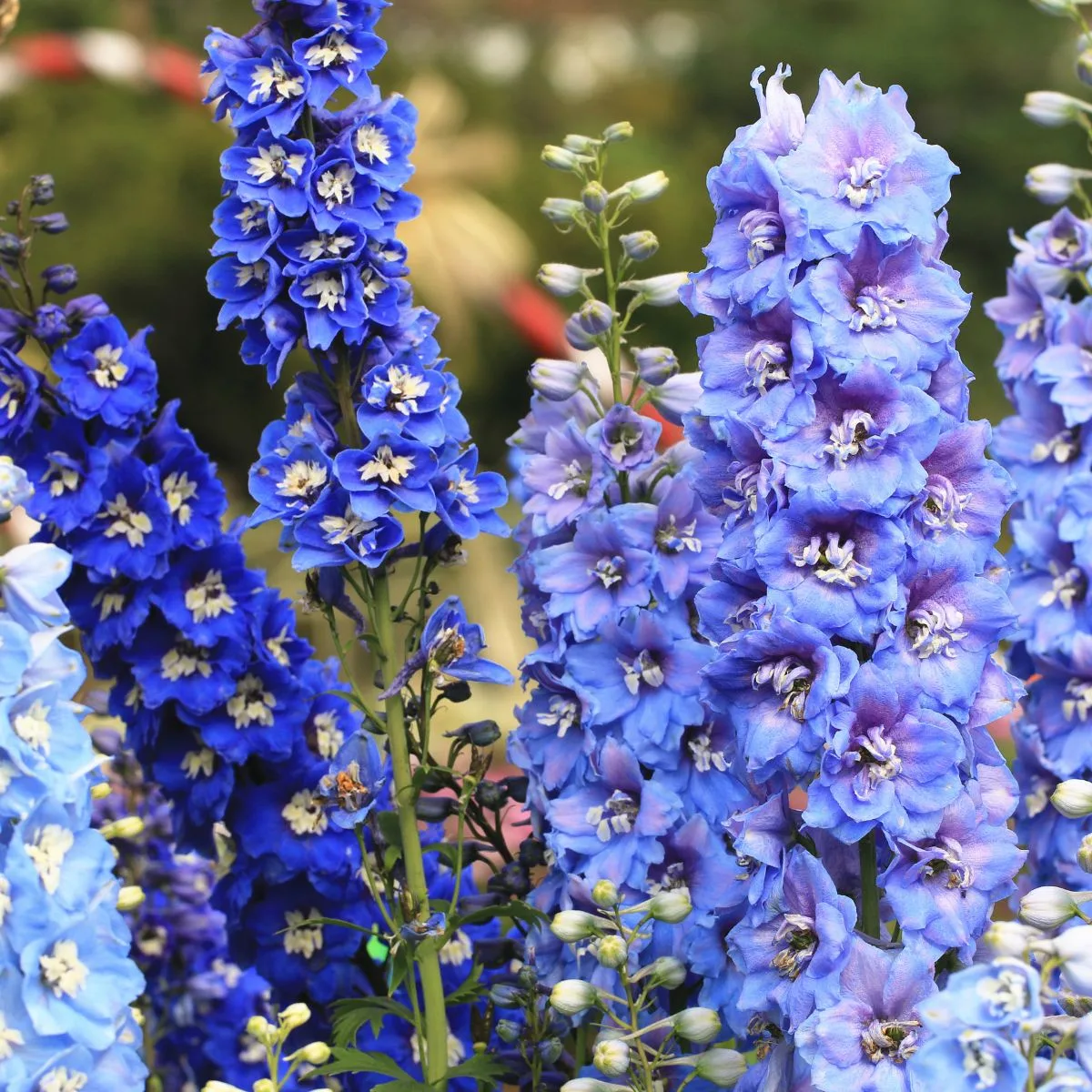
Although its tall spires of blue flowers would be stunning next to bee balm, delphinium should probably not be planted too close to it. This is because delphinium is a common host for powdery mildew, which could spread to any bee balm planted nearby.
2. Lettuce
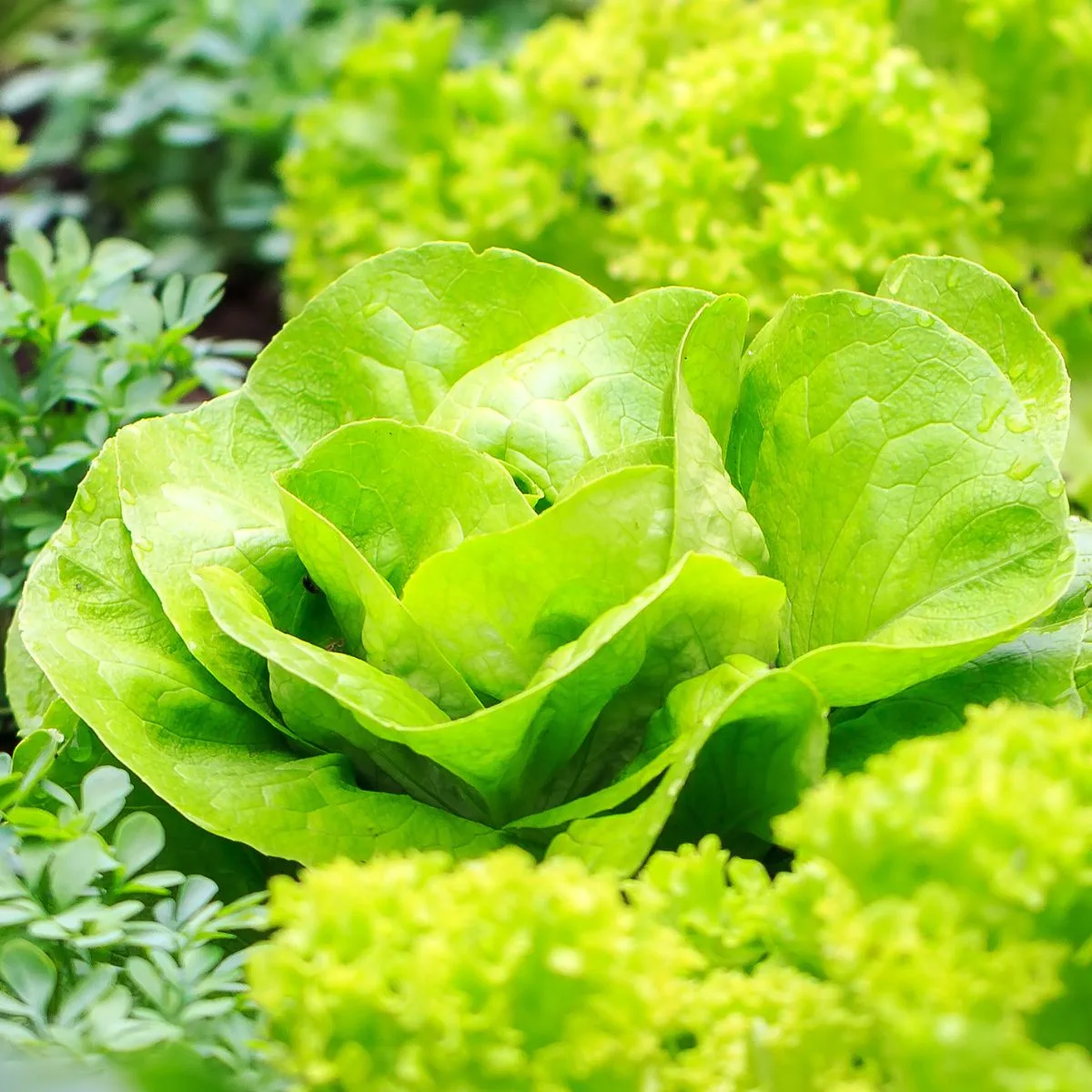
Slugs love lettuce and other leafy greens, like cabbage. Especially when bee balm is young and not yet well established, avoid planting lettuce nearby to prevent these slimy pests from moving easily between the vegetables and your bee balm.
3. Phlox
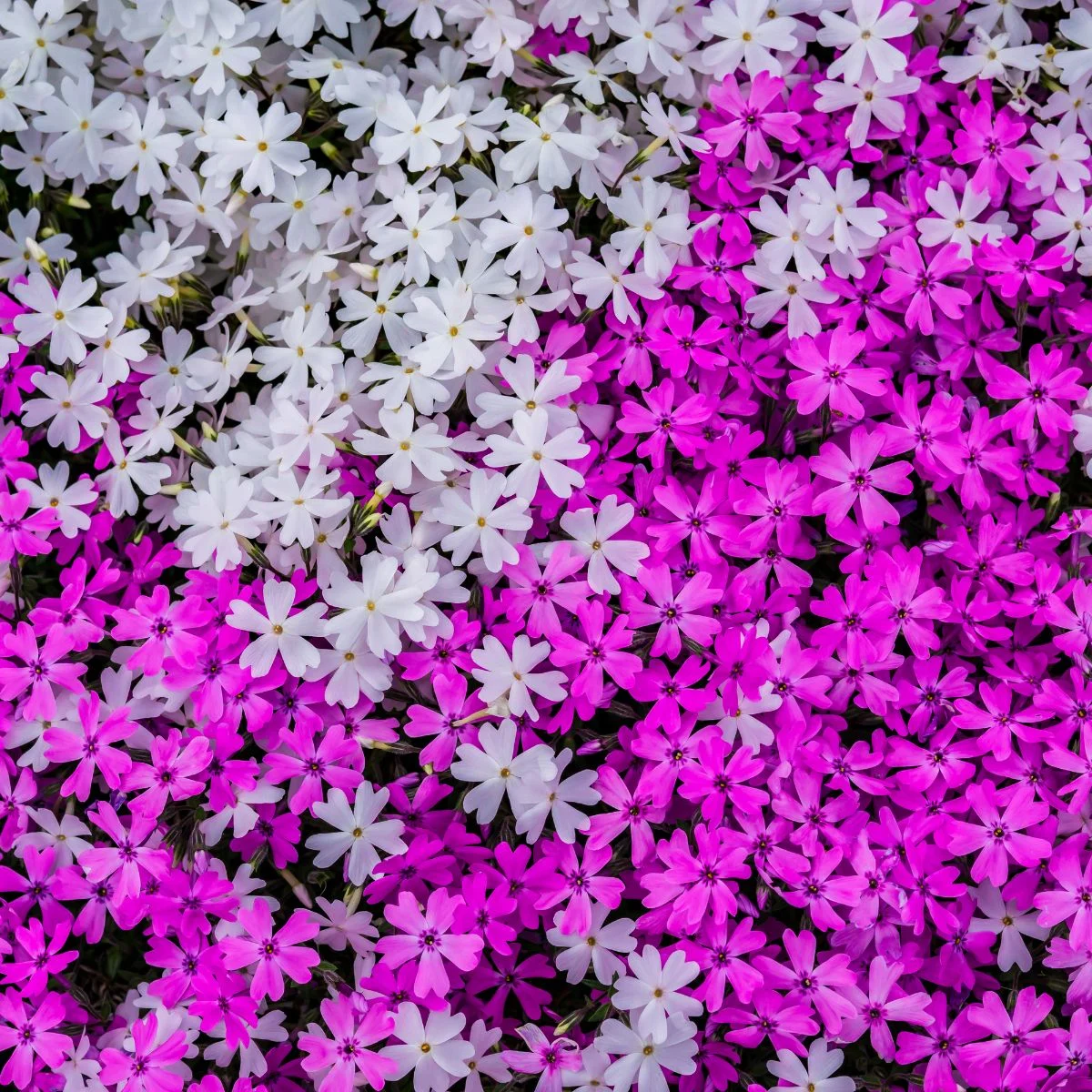
From low-growing groundcovers to tall, showy flowers, phlox can have a place in just about every garden. Just don’t plant it next to the bee balm. Both phlox and bee balm frequently get powdery mildew, and if planted next to each other, they could share the unsightly fungus.
4. Zinnia
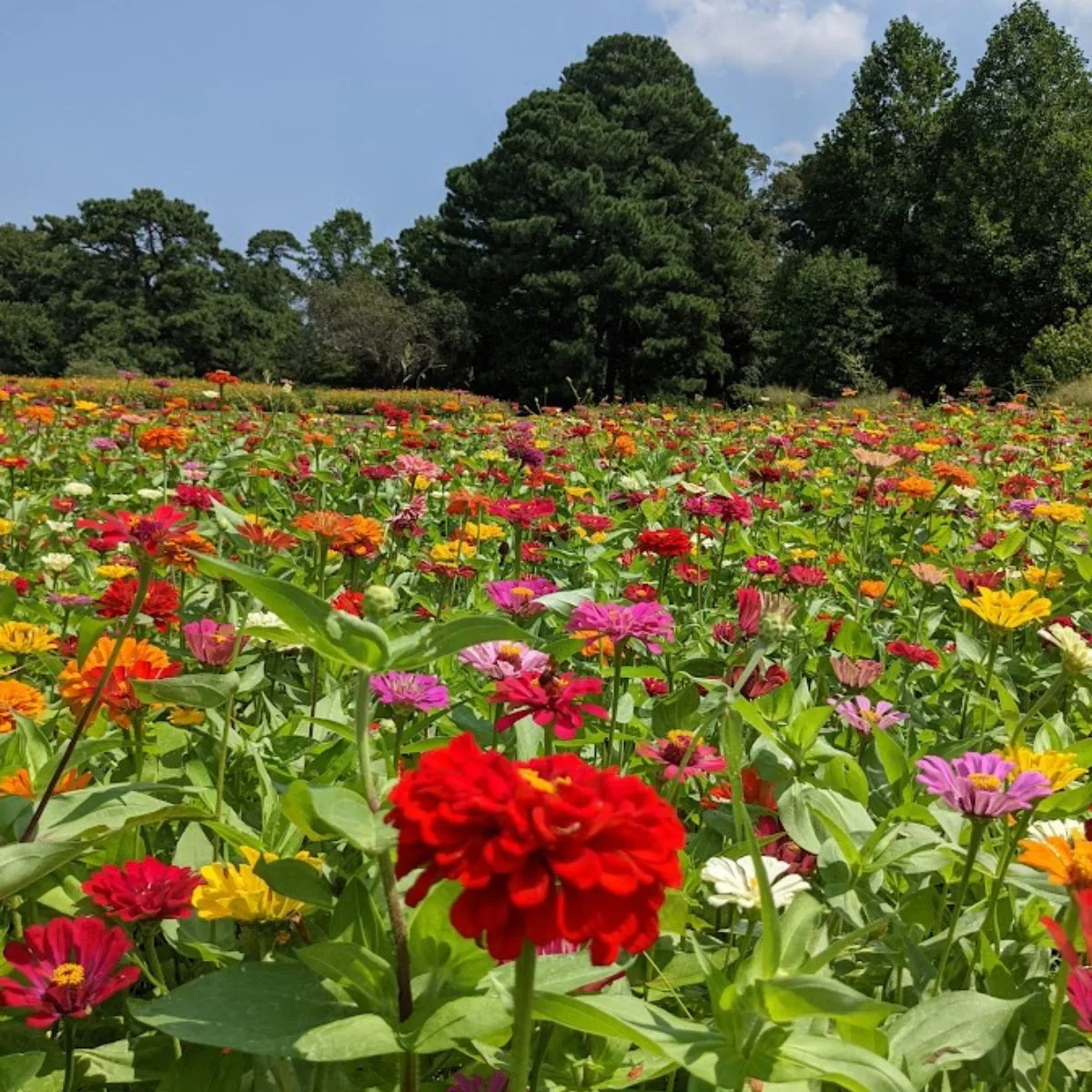
While two daisylike flowers made it onto the bee balm companion plant list, zinnias, unfortunately, should be kept at a distance. These colorful, classic annuals also commonly suffer from powdery mildew, landing them among the worst companion plants for bee balm.
Not only is bee balm a beautiful flowering perennial, but it also attracts hummingbirds and beneficial insects and can be used to make a spicy, flavorful herbal tea.
These are some of the best bee balm companion plants, but there are many more you can experiment with: purple coneflower (Echinacea purpurea), lemon balm (Melissa officinalis), borage (Borago officinalis), lavender (Lavandula), and more.
Plant bee balm with the proper companions for a stunning display or to take advantage of its benefits. The fast-growing bee balm is versatile, and perfect for using in a perennial garden, pollinator garden or a perennial border; you won’t be sorry to have this wonderful herb in your garden!

Serena Manickam is a freelance editor and writer and sustainable market gardener in rural Virginia. She holds a BA in environmental science and runs Fairydiddle Farm, a small market garden in which she grows no-spray produce and herbs to sell at a local farmer’s market.










Companion Planting Guide (Including 7 Benefits Of Polyculture)
Thursday 8th of June 2023
[…] Companion plants for bee balm […]